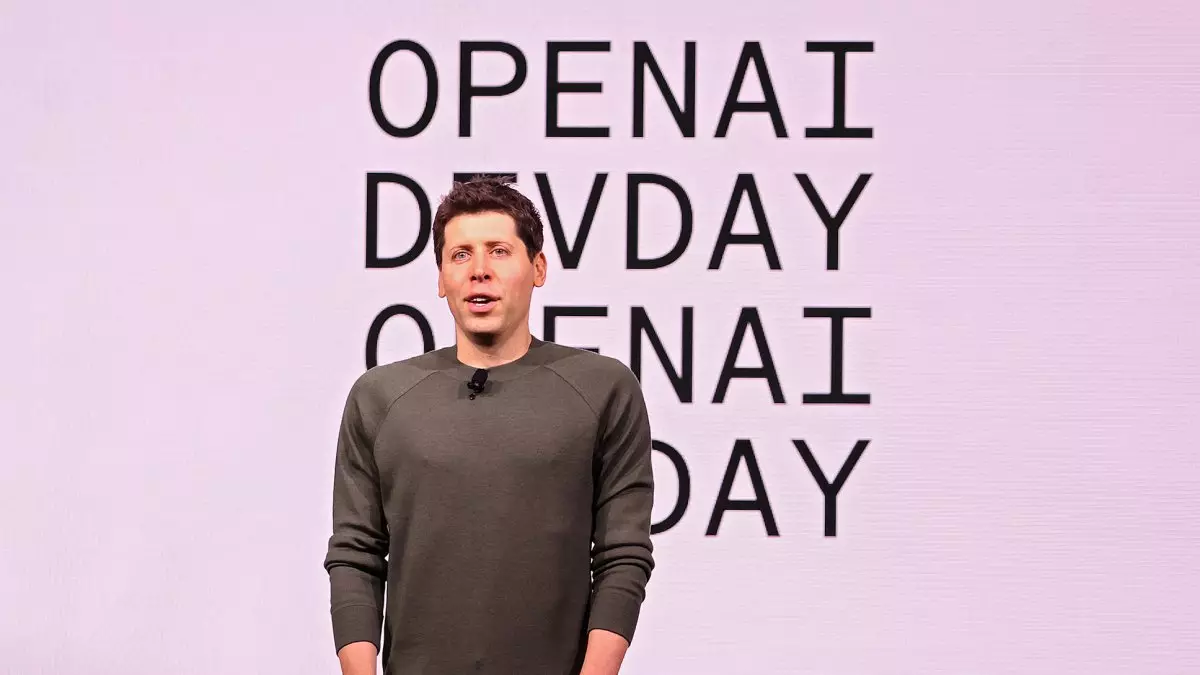The rapid evolution of artificial intelligence has set the stage for unprecedented advancements, yet companies like OpenAI are navigating a maze of challenges that impede their progress. Recently, in a Reddit AMA, OpenAI’s CEO, Sam Altman, illuminated some of the primary hurdles the organization faces, especially concerning computing capacity. This discussion shed light on why OpenAI has not been able to release new AI models as promptly as it would like, signaling a need to address various constraints to maintain its competitive edge.
Compute Capacity: The Limiting Factor
In his candid disclosures, Altman highlighted that the increasing complexity of AI models is a significant factor in the delay of product rollouts. While the drive for innovation remains unyielding, the computational resources available to OpenAI are insufficient for their ambitious endeavors. The implications here are considerable; the company is not merely dealing with limited data processing capabilities but is also faced with the difficult task of prioritizing among a myriad of promising ideas. This shortage in compute resources raises questions about OpenAI’s operational strategy and long-term growth potential.
Reports have emerged that OpenAI has been collaborating with Broadcom to design a specialized AI chip, but such developments are years away. Until these chips come into fruition—expected around 2026—the company must operate within its existing limitations, which constrains its ability to enhance its offerings rapidly. This constraint has been evident in feature rollouts such as the advanced visual capabilities for ChatGPT’s Advanced Voice Mode, which have been put on hold. The rushed demonstration of this feature back in April hinted at a lack of preparedness, further emphasizing the ongoing challenges in coordinating product timelines with technological readiness.
The landscape of generative AI is fiercely competitive. Companies like Luma and Runway are aggressively developing video AI technologies that threaten to outpace OpenAI in this sector. The internal setbacks reported regarding OpenAI’s Sora video generation tool not only highlight the intricacies of developing cutting-edge technology but also unveil the risks of being outmatched by competitors. With processing delays noted—for instance, taking over 10 minutes to create a mere minute of video—OpenAI faces the risk of falling behind in a market where speed and efficiency are paramount.
Moreover, the recent departure of key personnel, such as Tim Brooks to Google, signals potential instability within OpenAI’s ranks. Talent is a crucial asset in technology firms, and losing influential team members, particularly those leading core projects, can impede progress on strategic innovations. Such transitions create uncertainty that could dissuade investors and stakeholders from fully committing to OpenAI’s long-term vision.
An intriguing aspect of Altman’s AMA was the consideration of integrating NSFW (Not Safe For Work) content into ChatGPT in the future. This openness points to a broader philosophy of treating users with the respect and autonomy they deserve. However, such content inclusion must be weighed carefully against ongoing discussions about safety, ethics, and potentially harmful consequences. There lies a balancing act between pushing the boundaries of technology while also remaining accountable to community standards and user safety.
Looking ahead, Altman mentioned a lack of a definitive release plan for DALL-E’s latest image generation. This admission underscores the uncertainty that characterizes not only OpenAI’s current projects but also the overarching strategy of rolling out new features. As the anticipation builds around new updates to the o1 series of reasoning models, stakeholders are left in suspense regarding what “very good releases” might entail. The stakes are high; if OpenAI cannot deliver on these promises, it risks losing its standing in the rapidly evolving AI marketplace.
While OpenAI stands as a leader in the AI field, the challenges articulated by Altman call for a reflective look at its operational strategies and market positioning. The combination of resource limitations, internal setbacks, and competitive pressures will form a crucible that will ultimately determine the future trajectory of OpenAI. The path ahead necessitates not only technological innovation but also strategic foresight to navigate through an increasingly complex landscape.

